What's a Little Mass Murder Between Friends: the US, China, and the Future of the Middle East Part 1/2
Oil, Arms, and Partners
This is Part 1 of 2 part series on the Middle East Crisis post 7 October attack. For Part 2:
On 7 October 2023, Palestinian forces successfully broke out of the Gaza concentration camp and dealt Israel its greatest setback since October 1973. Since then, the US has backed Israel in a genocidal campaign against the Palestinians of Gaza as well as acts of aggression against multiple other countries in the region centered around Iran and its Axis of Resistance. The US however, is not just doing it because it loves Israel or hates Iran so much, but also as a way to try and destroy Chinese influence in Greater Middle East. To understand why, we must examine the history of the region and the outside actors that have acted upon it, and the current geopolitical chessboard.
China and the Arabs
China has long had a productive and fruitful relationship to Western Asia. In the pre-modern era, Chinese empires engaged in trade with and through the region, with Chinese commodities like silk and porcelain being highly prized in markets as far afield as Baghdad, Constantinople, and Rome.[1] Modern China, while having a profoundly different socioeconomic system from imperial China, has still sought similarly productive relations with the Middle East. Soon after the establishment of the PRC in 1949, the Non-Aligned Movement of third world countries arose seeking to be forced into neither camp. China was a strong supporter of the Non-Aligned Movement, including one of its founding leaders, pan-Arab nationalist Gamel Abdel Nasser of Egypt.[2] After the Sino-Soviet split of the 1960s and 1970s, China also began moving towards establishing better relations with US-aligned govts in the region. In the 1970s and 1980s, China began serious arms sales to countries in the region most notably selling arms to both Iraq and Iran during their 8 year war.[3] China and the US aligned Arab countries found themselves on the same side in Afghanistan as both supplied aid to the insurgents fighting the Soviet-backed Democratic Republic of Afghanistan. By the 1990s, China had established relations with all the countries of the region regardless of their other geopolitical alignments. As the Chinese economy grew, it needed more and more oil, much of which was imported from West Asia, while those countries imported Chinese goods ranging from consumer items to eventually advanced machinery. China also continued to sell arms to many countries in the region. China has maintained positive relations with many countries across the regional divide, with productive ties to both Iran and Saudi Arabia.[4]
China and Palestine-Israel
China has also been involved in the region’s longest running issue, that of Israel-Palestine. During the earlier years of the PRC, China supplied arms and training to Palestinian resistance fighters and supported the Palestinian cause diplomatically. However, as China shifted towards the Western camp in the 1980s relations with Israel also began to open up, and material support for Palestinian armed struggle was gradually dropped.[5] China opened formal diplomatic relations with Israel in the 1990s, and the countries established a fruitful working relationship. China saw Israel as an outlet to obtain advanced Western military technology which most Western countries were unwilling to sell to China, which Israel was happy to oblige for the right price.[6] In particular, Chinese fighter development was rumored to have strongly benefited from technology transfers from the canceled IAI Lavi program. As time went on, trade and investment between Israel and China continued to grow, with Israel participating in the Belt and Road Initiative and allowing China concessions at the port of Haifa.[7] However, beneath the surface, substantial differences remained. China remained supportive of the Palestinian cause diplomatically and consistently condemned Israeli settlement activity and Israeli violence towards Palestinians, which proved a diplomatic annoyance to Israel, while Chinese ties to Iran were an even bigger headache. The biggest problem was the attitude of the Israel’s great protector, the US, who was increasingly angered by Israeli engagement with China as the US was aggressively trying to move against it.[8]
Oil and Dollars
For the US, strategy and concerns in Greater Middle East have long centered around oil. In the 1970s, the problems of the collapse of the gold-backed Bretton Woods monetary system, the Oil Shock, and slowdown of the rapid growth from the post-World War 2 recovery presented a serious challenge to the US-led capitalist order. The US response to all three in large part took the form of the creation of the Petrodollar system. The US would require Saudi Arabia and other major oil producers to denominate oil sales only in US dollars, which preserved the value and position of the dollar as world reserve and trading currency since everyone needed oil. The dollars would then be recaptured by the US in the form of purchases of US stocks, bonds, and other investments as well as massive US arms purchases, as the dollar volumes far exceeded the regular import needs of the oil producers. The dollar recycling thus substantially boosted the US economy as foreign oil profits ended up flowing into US assets anyway. The US dollar and its associated financial system is the US’s most powerful weapon given its present economic dominance, as it allows the US to effectively unilaterally exclude countries from the global economy.[9] US dominance in the Greater Middle East also allows it potentially directly manage or cut off oil exports to particular countries, which would be very important if it say, got into a war with major country that relies on substantial oil imports.[10] The expansion of US domestic oil production thanks to shale technology has also meant that the US imports less from the region than it used to, just as China’s economic expansion has resulted in increasing oil imports from the region. Thus Chinese economic and diplomatic influence has substantially expanded in the region as they have become the primary oil export customer.
Project for New American Middle East
The US has spent the past 2 and half decades working at securing total dominance in Greater Middle East. The first attempt took the form of neoconservative “Clean Break” strategy, which was supposed to be a series of US invasions throughout the region to destroy all opposing geopolitical forces, epitomized by the “Seven countries in five years” seen at the Pentagon by General Wesley Clark.[11] This plan was explicitly designed to destroy and remake the region as the US would prefer it, and allow the US to control the flow of oil from the region. However, the plan broke down after the first one, the invasion of Iraq, resulted an insurgent quagmire, forcing the other invasions to be called off. The second attempt took the form of the Arab Spring, a series of color revolutions supported by US “democracy promotion” efforts. Unrest was violently and successfully quelled in most US-aligned countries in the region without much objection from the US or its media-NGO proxies, with the notable exception of Egypt (though that was quickly corrected by a US backed military coup against the post-Arab Spring democratically elected president). In countries on the US target list like Libya and Iran-aligned Syria, the Arab Spring resulted in civil war with violent Western-backed Islamist radicals.[12] The US also further increased pressure against Iran during this period, with a brief period of détente under the JCPOA being rapidly replaced by the “maximum pressure” campaigns of the Trump and Biden era and assassination of Iranian officials like Qassem Soleimani.[13] The third attempt has taken the form of the Abraham Accords.
Abraham’s Folly
The Abraham Accords are a proposed series of agreements to normalize relations between Israel and the Arab governments, starting under the Trump administration and continuing into the Biden administration, becoming the centerpiece for both presidents’ Middle East policy.[14] Israel has and continues to be the US’s most important enforcer in the region, and its diplomatic isolation was not just an embarrassment but an active hinderance to its role in upholding US domination. Historically, Arab governments have refused to have formal ties with Israel until a just solution to the Palestinian question can be reached, which historically has meant the UNSC backed international consensus of a two-state solution (Israeli withdrawal to its pre-1967 borders and the establishment of an independent Palestinian state with East Jerusalem as its capital).[15] The Abraham Accords were an explicit attempt to break Arab unity on the issue and short circuit it by effectively bypassing a final settlement of the Palestine issue in favor of immediate Arab-Israeli normalization on an individual bilateral basis. The core target of this policy was normalization between the Gulf Arab monarchies and Israel, pitched to the Gulf by the US and Israel on the basis of their mutual antipathy towards Iran. Washington wanted its most important West Asian assets on the same page and openly working together. Normalization would thereby lead to Gulf Arab economic but especially military partnership and integration with a US-aligned Israel against Iran.[16] However, the ultimate target was China. China has worked to woo the Gulf monarchies away from the US for many years now, anticipating that strenuous Gulf opposition would make a hypothetical US oil embargo against China difficult if not impossible. The Abraham Accords were designed to firmly lock in the Gulf Arabs into a pro US position instead of neutrality between the two superpowers, or worse yet an alignment with China.[17]
The Saudi Card
Prior to 7 October, the struggle for the future of West Asia could be most clearly seen in Saudi Arabia. The United States considered it the centerpiece of the Abraham Accords given Saudi’s size and influence especially in the Sunni Arab world. Saudi Crown Prince Mohammad bin-Salman knew how important this was for the US, and drove a hard bargain for consideration of the Abraham Accords, demanding a variety of enormous boons and concessions from the US including but not necessarily limited to support for his ascension as king, sales of the most advanced US weapons, permitting a Saudi nuclear program, and a NATO article 5 level treaty security guarantee.[18] (Whether MBS actually wanted to go through with the agreement was somewhat questionable though, as some of the big-ticket items like the security treaty would have been difficult to obtain at best and would have served as a good excuse to back out when they likely failed to materialize) In exchange, the US demanded nothing but China related concessions from Saudi: no PLA bases, no Huawei, no RMB oil sales, etc., while also promising that the Israel normalization would fix anything and everything in Saudi. The Iran threat would be contained or resolved by Israeli aggression. Western foreign investment would be attracted by Israeli-Saudi partnerships, in particular the India Middle East Economic Corridor (IMEC) proposal, an idiotic and economically irrational '“BRI alternative” vaporware built around transporting Indian goods by sea to Saudi Arabia, unloading them onto a train that would pass through Saudi, Jordan, and Israel, before loading them back on to a ship in an Israeli port for final transit to Europe(why you wouldn’t just sail the whole way through Suez is beyond me). The US govt discontent with Saudi over the bonesawing Kashoggi would also be swept under the rug in exchange for normalization. However, the Palestinian issue remained an active thorn, as Saudi could not sign an agreement without at least some cosmetic concessions given its self-appointed role as a leader in the Muslim world, and even those cosmetic concessions were unpopular with Israel’s radicalized govt and population.[19] China also sought to woo Saudi Arabia to its side. In addition to increasing trade and investment in the country and an upgraded bilateral diplomatic relationship, China also offered its good offices as a mediator in the Iran-Saudi dispute, over which diplomatic talks were already under way.[20] For China, this was an opportunity to broker peace between two of its largest oil sources and reorient the region towards a pro peace and development track. Years of Saudi-Iran hostility had produced basically no positive results for Riyadh, with a military quagmire in Yemen against the Iran-supported Houthi movement that had already begun spilling into Saudi Arabia proper, enormous money sunk into the bottomless pit that was the regime change war in Syria, and a failed attempt to subjugate Qatar over its Iran ties.[21] Another factor pushing towards restoring ties was Saudi Arabia’s fundamental military fragility, as the country is totally dependent economically and for the physical existence of its population on very fragile infrastructure like desalination plants and oil refineries. This vulnerability had already been demonstrated by Yemeni strikes against oil facilities in Saudi Arabia and the inability to defend or adequately respond to it, and a potential war with Iran was to court extinction as a country.[22] After months of Chinese mediation, an agreement was announced to the public in March of 2023 in Beijing. (Note that China was actually able to deliver on its promises) By helping to settle disagreements across the Gulf, China blunted the appeal of aligning with the US posture in the region, as the Gulf monarchies no longer needed US-Israeli confrontation with Iran nearly as much. Thus the contrasting US and Chinese approaches to West Asia (and indeed the world generally) can be seen. The US promises vaporware and delivers war while China promises and delivers peace and economic development. The whole situation in the region was still considered to be good for the US though, with Biden National Security Advisor Jake Sullivan stating at the Atlantic Council on 29 September 2023 that “The Middle East region is quieter today than it has been in two decades.”
[1] “Silk Road.” Encyclopædia Britannica, November 27, 2024. https://www.britannica.com/topic/Silk-Road-trade-route.
[2] Stuart, Logan. “How China’s Response to the Suez Canal Crisis Helped Shape Sino-Egyptian Relations.” Zenith! Undergraduate Research Journal for the Humanities, June 2021. https://journals.ku.edu/zenith/article/view/15567.
[3] Gill, Bates. “Chinese Arms Exports to Iran.” Middle East Review of International Affairs, May 1998. https://ciaotest.cc.columbia.edu/olj/meria/meria598_gill.html.
[4] Jin, Wang. “Xi’s Visit Marks New Era for China-Arab Relations.” – The Diplomat, December 13, 2022. https://thediplomat.com/2022/12/xis-visit-marks-new-era-for-china-arab-relations/.
[5] Cafiero, Giorgio. “How Far Does China’s Support for the Palestinian Cause Go?” TRT World - Breaking News, Live Coverage, Opinions and Videos, June 18, 2021. https://www.trtworld.com/opinion/how-far-does-china-s-support-for-the-palestinian-cause-go-47640.
[6] Grossman, Derek. “China Is Burning All Its Bridges with Israel | Rand.” RAND, May 15, 2024. https://www.rand.org/pubs/commentary/2024/05/china-is-burning-all-its-bridges-with-israel.html.
[7] Hewson, Robert. “Chinese J-10 ‘Benefited from the Lavi Project.’” Chinese J-10 “benefited from the Lavi project” - Jane’s Defence News, May 19, 2008. https://web.archive.org/web/20080526183625/http://www.janes.com/news/defence/jdw/jdw080519_2_n.shtml.
[8] Grossman, Derek. “China Is Burning All Its Bridges with Israel | Rand.” RAND, May 15, 2024. https://www.rand.org/pubs/commentary/2024/05/china-is-burning-all-its-bridges-with-israel.html.
[9] Norton, Ben, and Max Blumenthal. “Super Imperialism: The Economic Strategy of American Empire with Economist Michael Hudson - the Grayzone.” The Grayzone - News and investigative journalism on empire, October 19, 2021. https://thegrayzone.com/2021/10/19/super-imperialism-economist-michael-hudson/.
[10] Lee, Peter. “‘vice’, Dick Cheney’s Ghost, and the Lies of America’s Team China War.” Chinhand, February 21, 2019. https://chinamatters.blogspot.com/2019/02/vice-dick-cheneys-legacy-and-china-war.html.
[11] Conason, Joe. “‘Seven Countries in Five Years.’” Salon, September 25, 2011. https://www.salon.com/2007/10/12/wesley_clark/.
[12] Muhho, Sam. “Color Revolutions. Getting Our Facts Straight on the ‘Arab Spring.’” Global Research, April 28, 2014. https://www.globalresearch.ca/color-revolutions-getting-our-facts-straight-on-the-arab-spring/5379479.
[13] Motamedi, Maziar. “Five Years after Trump’s Exit, No Return to the Iran Nuclear Deal.” Al Jazeera, August 8, 2023. https://www.aljazeera.com/news/2023/5/8/five-years-after-trumps-exit-no-return-to-the-iran-nuclear-deal.
[14] Khalid, Asma. “Biden Is Building on the Abraham Accords, Part of Trump’s Legacy in the Middle East.” NPR, July 9, 2022. https://www.npr.org/2022/07/09/1110109088/biden-is-building-on-the-abraham-accords-part-of-trumps-legacy-in-the-middle-eas.
[15] “The Arab Peace Initiative.” Al Jazeera, March 28, 2010. https://www.aljazeera.com/news/2010/3/28/the-arab-peace-initiative.
[16] Khalid, Asma. “Biden Is Building on the Abraham Accords, Part of Trump’s Legacy in the Middle East.” NPR, July 9, 2022. https://www.npr.org/2022/07/09/1110109088/biden-is-building-on-the-abraham-accords-part-of-trumps-legacy-in-the-middle-eas.
[17] Zha, Carl. “US Grand Strategy in the Middle East to Contain China-Peter Lee Interview.” YouTube, July 20, 2024.
[18] “Al-Aqsa Flood: A Historic Operation Protecting the Region and the World from Grave Danger.” Khamenei.ir, June 6, 2024. https://english.khamenei.ir/news/10841/Al-Aqsa-Flood-A-historic-operation-protecting-the-region-and.
[19] Toosi, Nahal. “The Saudi Crown Prince Is Talking about an Assassination. His Own.” Politico, August 14, 2024. https://www.politico.com/news/magazine/2024/08/14/saudi-prince-mbs-israel-deal-00173898.
Zha, Carl. “US Grand Strategy in the Middle East to Contain China-Peter Lee Interview.” YouTube, July 20, 2024.
[20] Ebrahim, Nadeen. “China and Saudi Arabia Are Getting Closer. Should the US Be Worried?” CNN, March 31, 2023. https://www.cnn.com/2023/03/31/middleeast/saudi-china-get-closer-mime-intl/index.html.
“Iran and Saudi Arabia Agree to Restore Relations.” Al Jazeera, March 10, 2023. https://www.aljazeera.com/news/2023/3/10/iran-and-saudi-agree-to-restore-relations.
[21] Ali-Khan, Veena. “Why Saudi Arabia Is Staying on the Sidelines in the Red Sea Conflict.” Foreign Policy, January 16, 2024. https://foreignpolicy.com/2024/01/16/saudi-arabia-red-sea-conflict-houthis-us-strike.
Muhho, Sam. “Color Revolutions. Getting Our Facts Straight on the ‘Arab Spring.’” Global Research, April 28, 2014. https://www.globalresearch.ca/color-revolutions-getting-our-facts-straight-on-the-arab-spring/5379479.
Emmons, Alex. “Saudi Arabia Planned to Invade Qatar Last Summer. Rex Tillerson’s Efforts to Stop It May Have Cost Him His Job.” The Intercept, October 26, 2018. https://theintercept.com/2018/08/01/rex-tillerson-qatar-saudi-uae/.
[22] “Houthis Launch ‘barrage of Attacks’ on Multiple Saudi Sites.” Al Jazeera, March 20, 2022. https://www.aljazeera.com/news/2022/3/20/houthis-launch-attacks-on-saudi-energy-desalination-facilities.






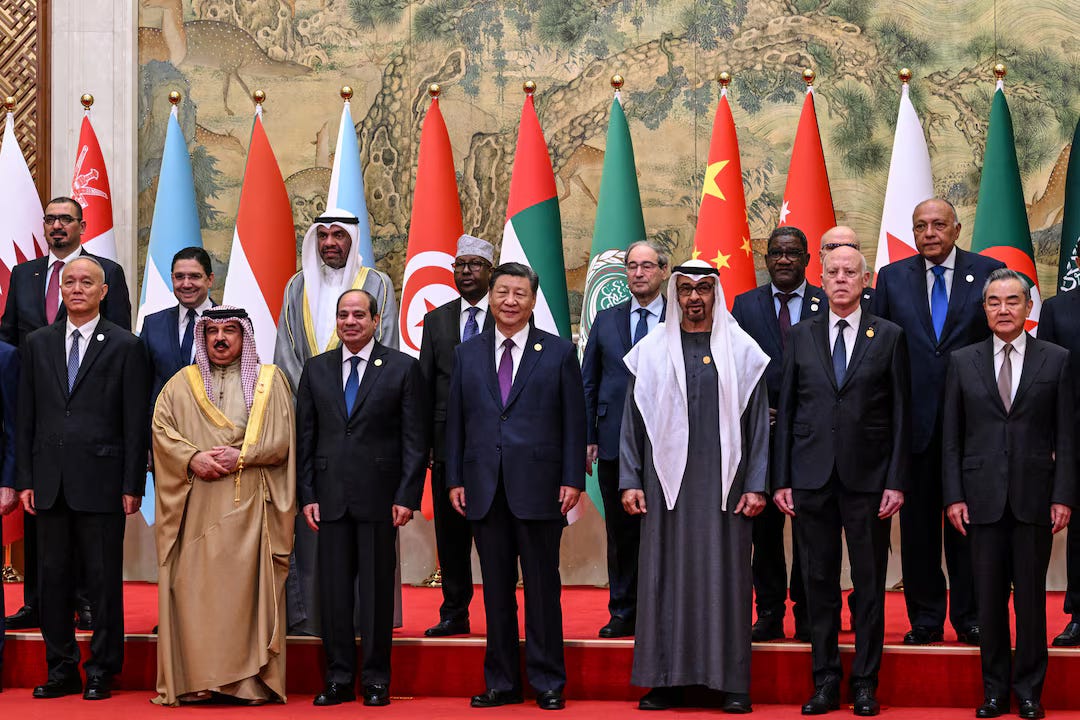
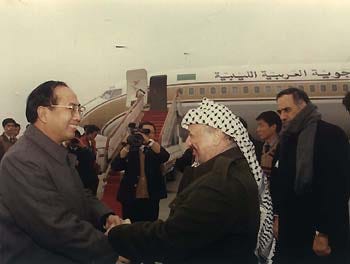
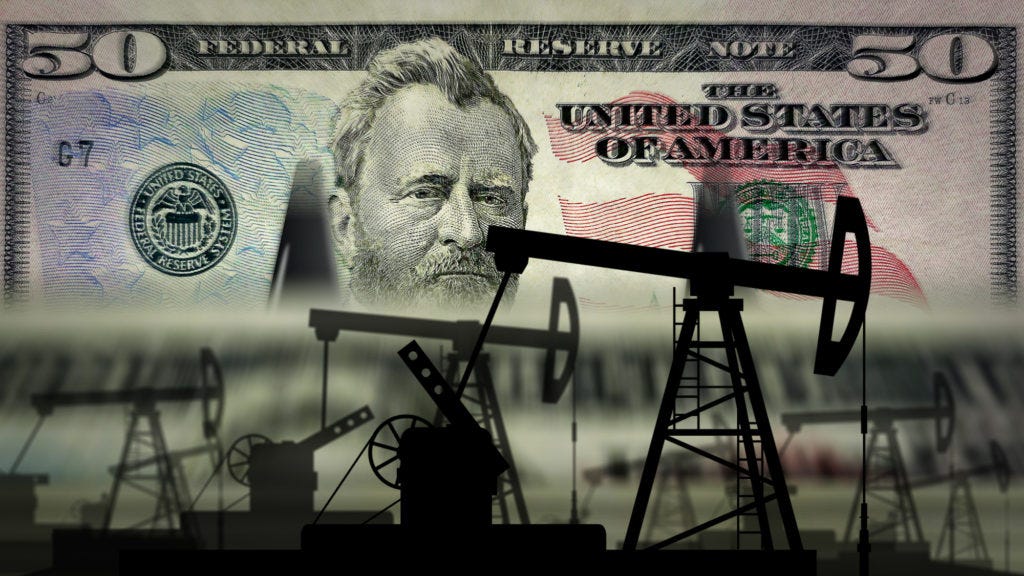
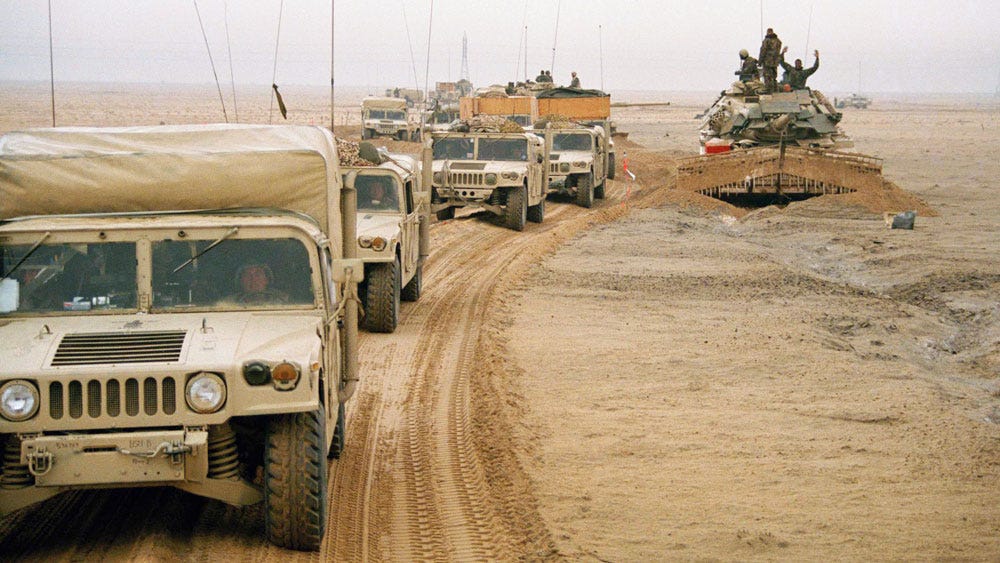
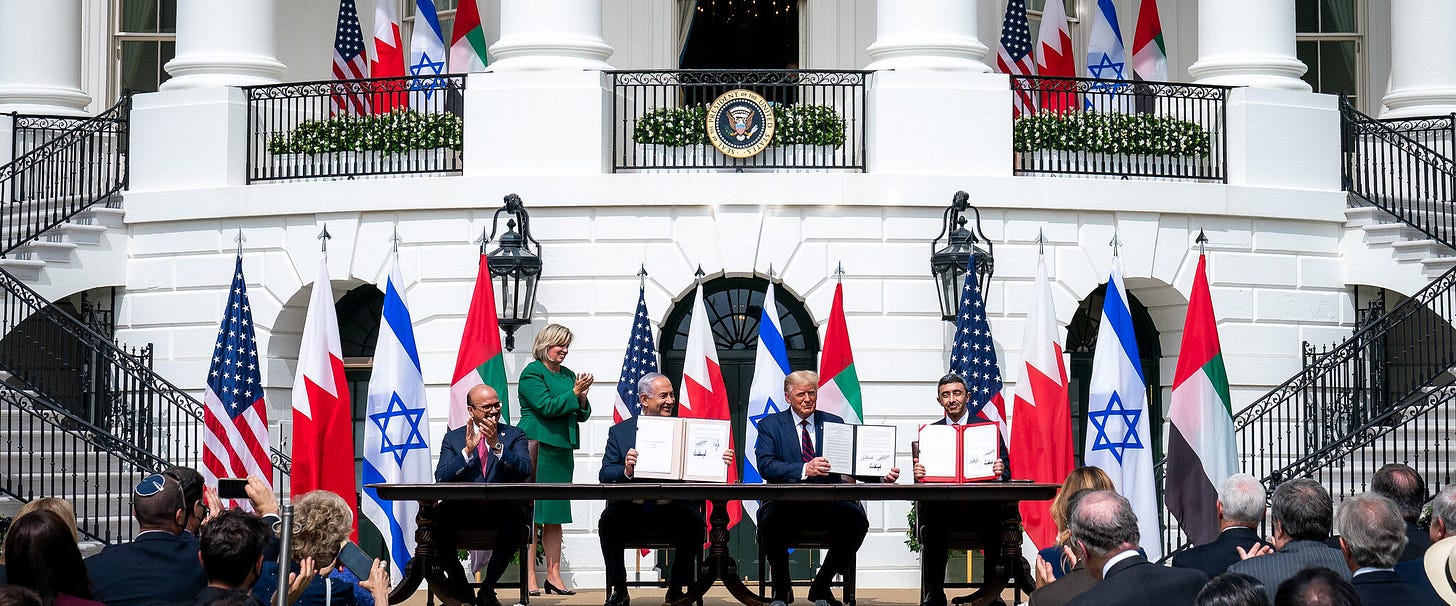
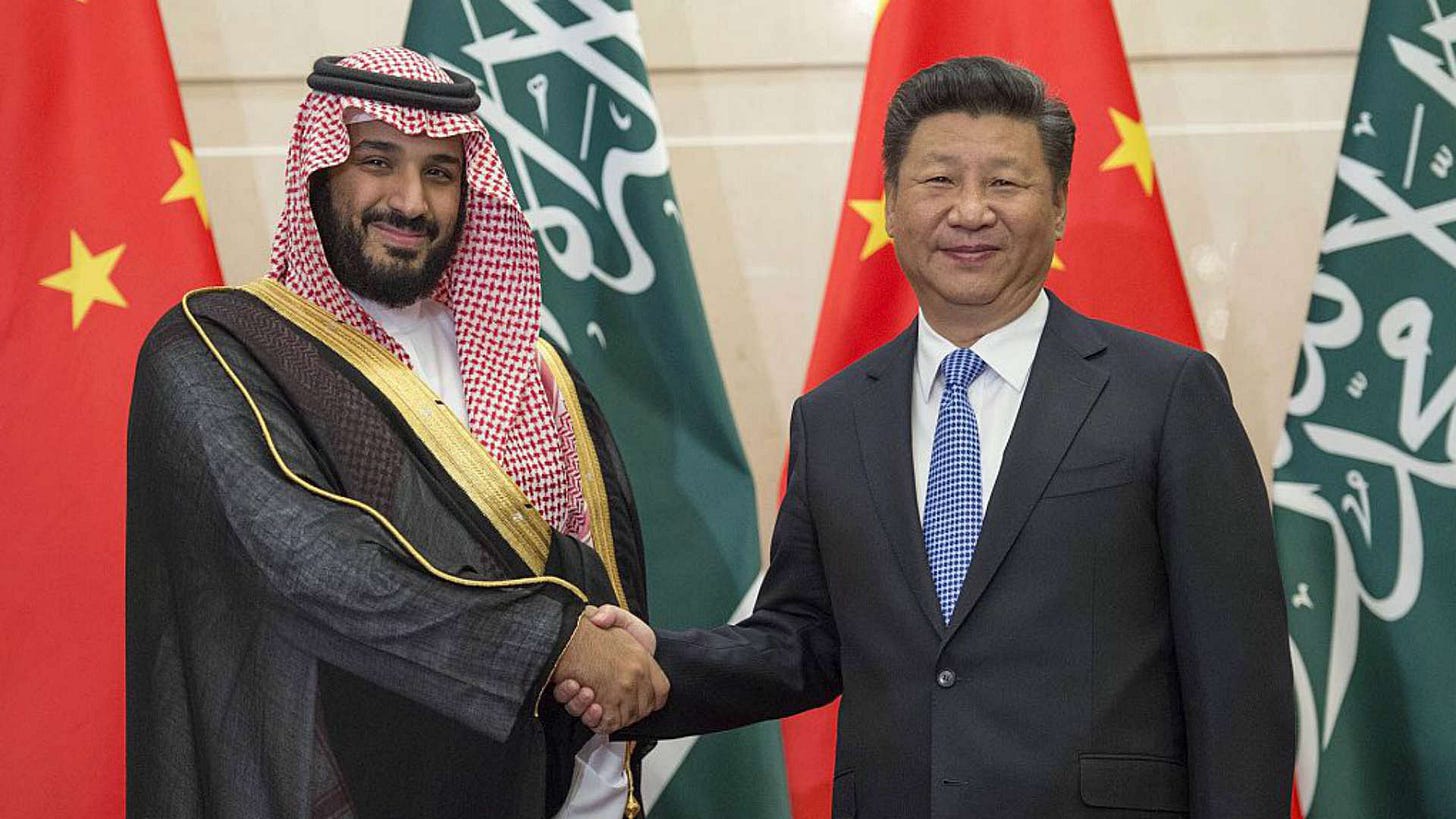
While the whole world was distracted by the World Cup, Qatar also officiated a new oil & gas trade clearinghouse.... Denominated in RMB! I sincerely wish a belated congratulation to China on successfully pulling this off 👏